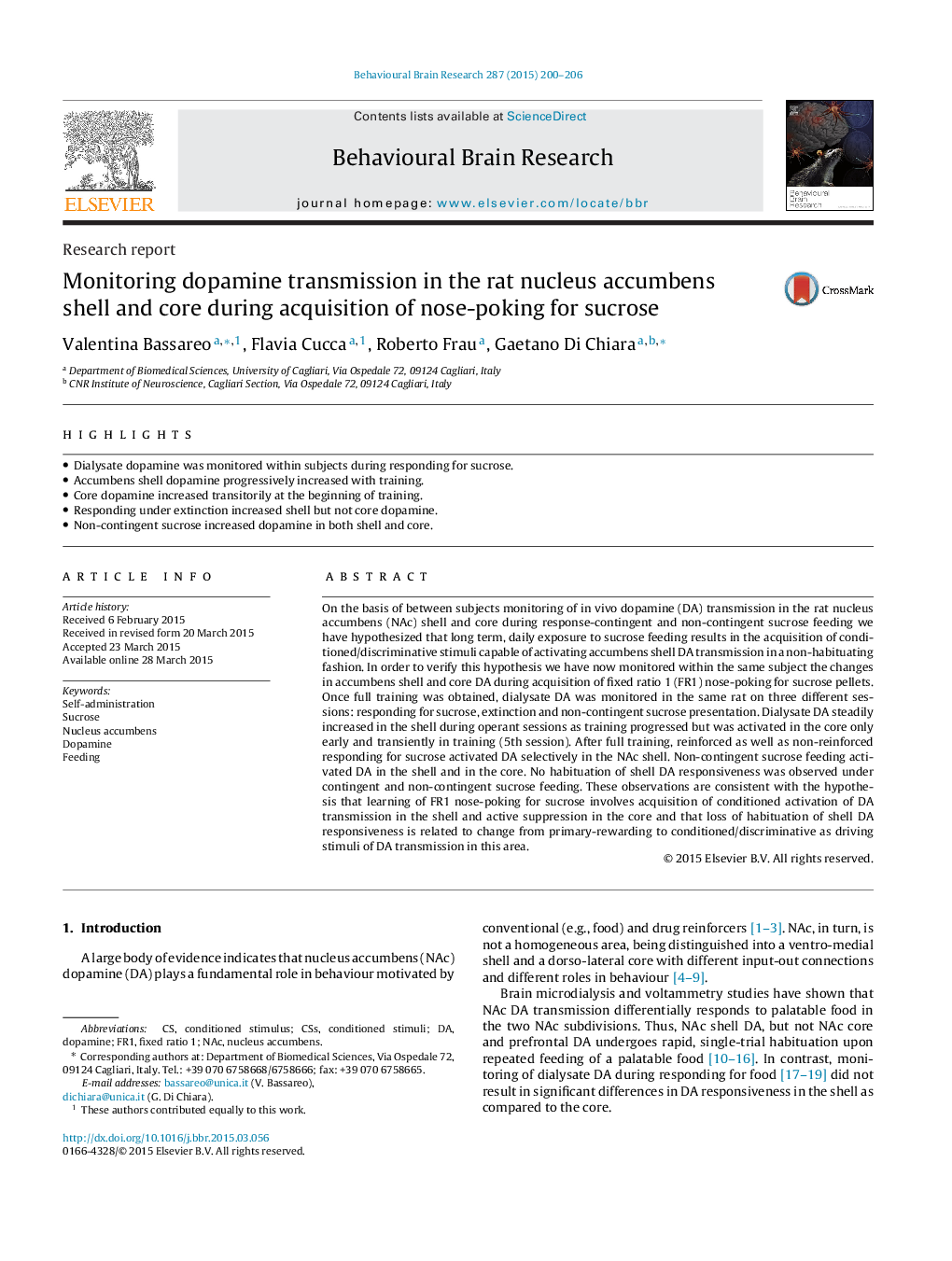| Article ID | Journal | Published Year | Pages | File Type |
|---|---|---|---|---|
| 6256906 | Behavioural Brain Research | 2015 | 7 Pages |
â¢Dialysate dopamine was monitored within subjects during responding for sucrose.â¢Accumbens shell dopamine progressively increased with training.â¢Core dopamine increased transitorily at the beginning of training.â¢Responding under extinction increased shell but not core dopamine.â¢Non-contingent sucrose increased dopamine in both shell and core.
On the basis of between subjects monitoring of in vivo dopamine (DA) transmission in the rat nucleus accumbens (NAc) shell and core during response-contingent and non-contingent sucrose feeding we have hypothesized that long term, daily exposure to sucrose feeding results in the acquisition of conditioned/discriminative stimuli capable of activating accumbens shell DA transmission in a non-habituating fashion. In order to verify this hypothesis we have now monitored within the same subject the changes in accumbens shell and core DA during acquisition of fixed ratio 1 (FR1) nose-poking for sucrose pellets. Once full training was obtained, dialysate DA was monitored in the same rat on three different sessions: responding for sucrose, extinction and non-contingent sucrose presentation. Dialysate DA steadily increased in the shell during operant sessions as training progressed but was activated in the core only early and transiently in training (5th session). After full training, reinforced as well as non-reinforced responding for sucrose activated DA selectively in the NAc shell. Non-contingent sucrose feeding activated DA in the shell and in the core. No habituation of shell DA responsiveness was observed under contingent and non-contingent sucrose feeding. These observations are consistent with the hypothesis that learning of FR1 nose-poking for sucrose involves acquisition of conditioned activation of DA transmission in the shell and active suppression in the core and that loss of habituation of shell DA responsiveness is related to change from primary-rewarding to conditioned/discriminative as driving stimuli of DA transmission in this area.
